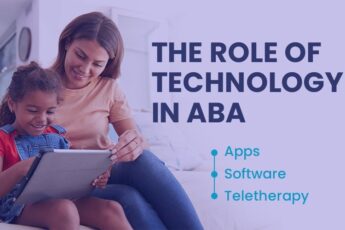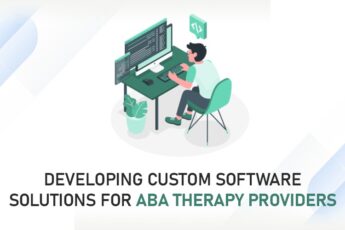Applied Behavior Analysis (ABA) therapy has become increasingly sophisticated, relying on data-driven approaches to personalize interventions and track progress. This has led to a surge in the use of software solutions designed to streamline workflows, enhance data collection, and improve communication between practitioners, clients, and families. This blog explores several case studies that highlight the successful implementation of software in ABA therapy, showcasing its impact on improving service delivery and outcomes.
Case Study 1: Enhancing Data Collection and Analysis with a Mobile App
Situation: A small ABA clinic struggled with inconsistent data collection and limited access to real-time insights into client progress. Therapists relied on paper-based records, leading to delays in data entry and analysis.
Solution: The clinic implemented a mobile application designed specifically for ABA therapy. This app allowed therapists to easily record data on client behaviour during sessions, including frequency, duration, and intensity. The application automatically generated reports and graphs, providing a comprehensive overview of client progress over time.
Outcome: The clinic witnessed significant improvements in data accuracy and efficiency. Therapists had real-time access to data, enabling them to make data-informed decisions during sessions. This facilitated more effective interventions and quicker adjustments to treatment plans. Families also had access to their child’s progress reports, promoting greater transparency and engagement in the therapy process.
Case Study 2: Streamlining Communication and Collaboration with a Cloud-Based Platform
Situation: A large ABA organization with multiple locations faced challenges in coordinating care across different therapists and teams. Communication delays and difficulty accessing client information hampered efficient service delivery.
Solution: The organization adopted a cloud-based platform designed for ABA therapy. This platform offered features such as secure messaging, shared client records, and centralized scheduling. Therapists could easily communicate with each other, access client information, and collaborate on treatment plans.
Outcome: The organisation saw a dramatic reduction in communication barriers. Therapists could seamlessly share information, coordinate appointments, and ensure continuity of care. This improved efficiency, reduced administrative burden, and enhanced collaboration among team members. Families also benefitted from improved communication channels, receiving timely updates and progress reports.
Case Study 3: Personalizing Interventions with a Personalized Learning Platform
Situation: An ABA therapist working with a child with autism spectrum disorder (ASD) faced challenges in engaging the child in learning activities and tailoring interventions to their specific needs.
Solution: The therapist used a personalized learning platform designed for children with ASD. This platform offered a variety of interactive games, activities, and educational content tailored to individual learning styles and preferences. It also tracked the child’s progress and provided real-time feedback to the therapist.
Outcome: The child exhibited increased engagement and motivation during therapy sessions. The therapist could personalize interventions based on the child’s responses and adapt the learning materials to ensure optimal learning outcomes. The platform also provided valuable data on the child’s strengths and areas needing improvement, further guiding the therapist’s interventions.
Case Study 4: Utilizing Teletherapy Software for Remote Service Delivery
Situation: An ABA therapist was providing services to a client in a remote location. Travel time and limited access to resources posed significant challenges to consistent service delivery.
Solution: The therapist implemented a teletherapy platform specifically designed for ABA therapy. This platform allowed them to conduct virtual sessions using video conferencing, screen sharing, and interactive tools. It also facilitated secure data sharing and communication with the client’s family.
Outcome: The therapist was able to deliver consistent and high-quality services despite the geographical distance. The platform allowed for engaging and interactive sessions, providing the client with access to personalized ABA therapy without the limitations of physical proximity.
Conclusion
DIBS recognizes the transformative potential of technology in the field of ABA therapy. We are committed to developing innovative software solutions that empower practitioners, enhance outcomes, and improve the lives of individuals with ASD and their families. By leveraging cutting-edge technologies and collaborating with industry experts, we strive to create software that addresses the unique needs of the ABA community. We believe that technology can bridge gaps, facilitate better communication, and ultimately contribute to a brighter future for individuals with ASD.
These case studies demonstrate the tangible benefits of leveraging software in ABA therapy. By embracing technology, practitioners can streamline their workflows, collect and analyze data more effectively, personalize interventions, and expand service accessibility. As technology continues to evolve, we can expect even more innovative solutions to further enhance the effectiveness and impact of ABA therapy in the years to come.






Leave a Comment